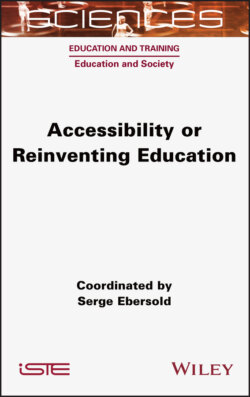Читать книгу Accessibility or Reinventing Education - Группа авторов - Страница 18
1.3.1. Preventing vulnerabilities through a universal approach to accessibility
ОглавлениеThe accessibilization of the environment is rooted in a universal approach to accessibility, which proposes the use of the most vulnerable as a reference point to prevent any need for further adaptation and ensure the success of the greatest number of people (Alaksen et al. 1997). This universal approach to accessibility builds upon the mobilization, a priori, of a diversified set of teaching and learning means and procedures that take into account the cognitive and social heterogeneity of pupils (Guptill 2015). It focuses primarily on students’ learning strategies, their needs and expectations, and promotes the appropriation of information and skills to make the targeted content better understood by the greatest number of students (Feyfant 2016). It consists of differentiating practices, carried out on a daily basis by the teacher in his or her classroom, with the aim of creating a context conducive to individual learning through heterogeneous teaching strategies conducive to the implementation of differentiated processes for the appropriation of knowledge and a personalization of educational pathways (Meirieu 2000; Przemycki 2008). They consist of a differentiated mobilization of content, a diversification of working modalities (individual, team, collective work) and support or production processes according to the rhythms and cognitive levels of pupils without, however, modifying the level of difficulty of the tasks to be carried out or the evaluation criteria for the targeted skills. They may be based on a reverse pedagogy, replacing the standardized and directly transferable pedagogical model with a model that seeks to “reconsider the overall organization of the teaching sequence, to question its temporality and spatiality, and to establish more stimulating learning conditions for learners – closer to their world and likely to lead them towards greater autonomy in their relationship to knowledge” (Bechetti-Bizot 2017, p. 19). They can also be based on an assessment of pupils’ cognitive and methodological achievements, enabling teachers to construct a teaching plan that will reduce the gaps between the overall level observed in each class and the expected level, and to manage the heterogeneity of school profiles. In addition they can be based on the creation of easily accessible documents, online or offline tutorials, and so on, that enable the work required of pupils to be contextualized, preparing them for the more complex tasks to be carried out later.
